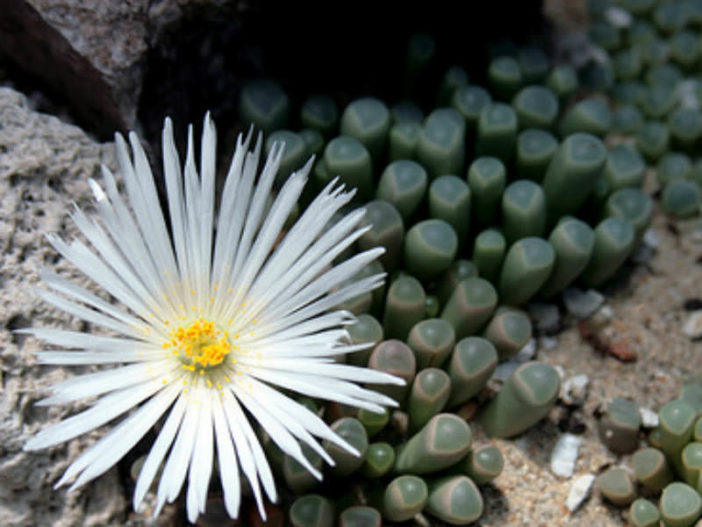Scientific Name
Fenestraria rhopalophylla (Schltr. & Diels) N. E. Br.
Common Name(s)
Baby Toes, Baby's Toes, Window Plant
Scientific Classification
Family: Aizoaceae
Subfamily: Ruschioideae
Tribe: Ruschieae
Genus: Fenestraria
Description
Fenestraria rhopalophylla is a small succulent with a not present or very reduced stem and thick fleshy club-shaped leaves with a convex transparent window at the apex, allowing light to enter for photosynthesis. Roots are thick, shallow, and spreading. Leaves are smooth, glaucous green, often partially buried, and grow up to 1.6 inches (4 cm) long. Flowers appear solitary or in groups of up to 3. They are pure white, up to 1.2 inches (3 cm) in diameter, and appear on long pedicels from fall to spring.
 Advertisements
Advertisements
Hardiness
USDA hardiness zones 10a to 11b: from 30 °F (−1.1 °C) to 50 °F (+10 °C).
How to Grow and Care
As with most succulent plants, the biggest problem is over or under-watering. While Baby Toes are tolerant of drought conditions, they need moisture to store in their leaves to sustain them during the growing season.
Move pots to a fully sunlit area where temperatures range at least 65 °F (19 °C).
Baby Toes have few pest or disease problems but watch out for rot when plants are overwatered or in pots that don't drain well.
Fertilize in early spring with a half dilution of cactus and succulent food. Suspend watering in the dormant season. Other than that, care of Baby Toes is so easy the infant whose toes they resemble could almost grow these great little succulents.
Origin
This species is native to Namibia and South Africa (Northern Cape).
Subspecies
Links
- Back to genus Fenestraria
- Succupedia: Browse succulents by Scientific Name, Common Name, Genus, Family, USDA Hardiness Zone, Origin, or cacti by Genus
Photo Gallery
Click on a photo to see a larger version.



